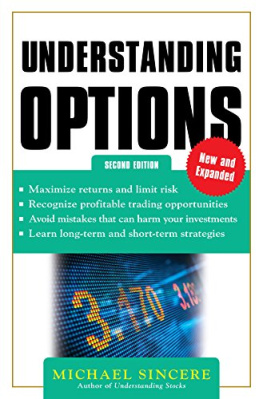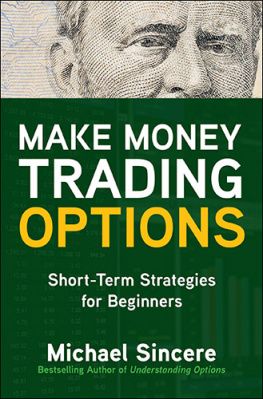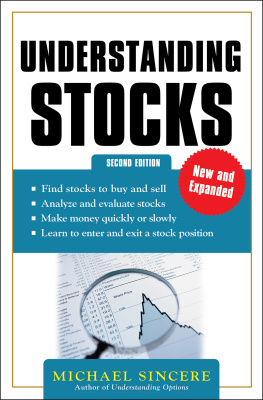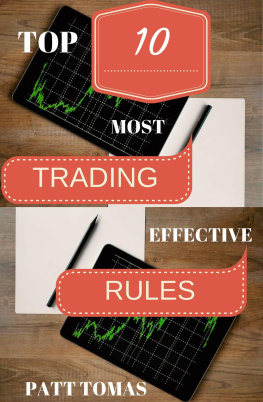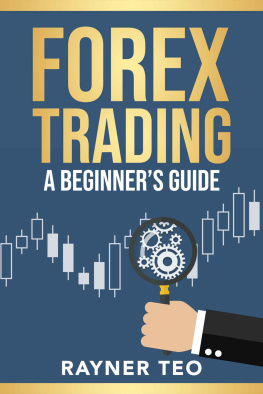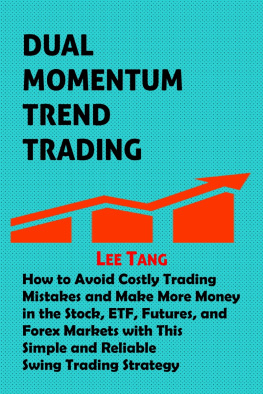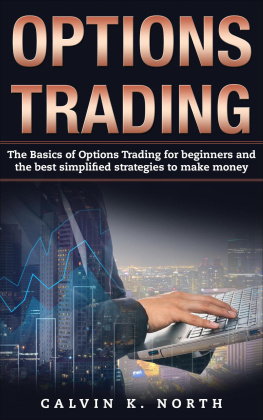Before we begin, I want to thank you for taking the time to read my book. I'm delighted you're willing to make the effort to learn more about day trading, a fascinating but often misunderstood way to make money. Be prepared to learn a lot of information in a short time period. I've included explanations and definitions of terms that may be unfamiliar to you in the book itself. These words, italicized in the text, are also included in a glossary at the back to help you keep informed.
In this part, I'll show you how to set up an account and a home office, and how to use specialized tools to make your first trade. That's the easy part. The hard part is using all of that information to increase earnings. Although you're about to take an educational and entertaining journey, my ultimate goal is to teach you to become a better trader while helping you to manage risk.
And now, let'st get started.
The Opening Bell: What Is Day Trading?
Day trading, or intraday trading, is a method that works just like it sounds: you enter a trade involving one or more stocks (or another security) and exit the trade which you've only held onto for seconds, minutes, or hours by the end of the day. It's only semantics, but in this book I often refer to day trading as a strategy. You could also call it a technique, style, or activity. The goal is to make a trade and exit with a profit the sooner the better and still get a good night's sleep.
Note to overseas readers: While the content of this book was written with the U.S. stock market in mind, the information included in this book can be applied to any stock market you trade on.
Myths Versus Reality
Many myths about day trading exist. Because uninformed traders have made mistakes in the past, many people think that day trading is too risky. They incorrectly believe that day traders are chained in front of a computer ten hours per day, making hundreds of lightning-fast trades while scooping up $500 worth of pennies.
Although a handful of individuals may fit this stereotype, many modern day traders are choosier about the trades they make. They tend to trade smarter and make only a handful of transactions a day. Rather than being highly active traders (making hundreds of trades a day), some day traders prefer being high-probability traders (trading when the odds are in their favor). It's really a personal choice what kind of trader you will be.
Day trading doesn't mean you'll be able to lounge in front of a pool in Europe while trading on a laptop or cell phone. Although some lackadaisical traders have made transactions while on never-ending vacations, it's unlikely they'll be profitable for long when trading in this environment. Why not? Most day traders need to focus like a laser beam on their screen without distractions; they have to be alert and at the top of their game at all times.
Traders work very hard they may put in fifty- to sixty-hour workweeks. Plus, they're responsible for their own taxes, tech support, and education. They have to make lightning-fast decisions, and if they're wrong, it could cost them money. Without a regular paycheck, many traders feel tremendous pressure to overtrade to make money. Because the markets are always changing, traders must also constantly evolve and adapt to market conditions. A strategy that works well one year may not work the following year.
Even with all of these challenges, it is possible to be a successful day trader, but you'll have to work hard at it.
On the plus side, it also means being in control of your time and your schedule. You don't have to commute to an office and report to a boss. It's extremely satisfying to find a good trade and be rewarded for it in money. And don't forget that you can trade from anywhere in the world, there's no dress code, and you have the freedom to set your own financial goals.
Some traders have combined the best of both worlds by trading part-time. For example, you could initiate a trade in the morning and set up automatic triggers to sell when the stock hits a certain price. In this case, day trading is simply another strategy that is used when market conditions are right. You'll learn about the benefits of part-time trading in the next chapter.
Why Read This Book?
If you're a rookie trader and want to learn more about day trading, you've come to the right place. You'll learn how to incorporate day trading strategies into your trading portfolio. And if you're thinking of becoming a full-time day trader, by the time you finish this book, you will have a better idea if day trading is for you. No matter what kind of trader you are, many of the lessons you'll learn in this book will be invaluable. I will also help you avoid some of the most common trading pitfalls.
If you're reading this book out of curiosity or entertainment, I'll try my best to meet your needs. Like all my other books, I try to explain day trading as if you were sitting across from me at my kitchen table. My goal is to save you time and money while educating and engaging you.
You'll learn:
How to get started, including how much money you'll need, how to choose and use a broker, and how to set up a trading account.
How to read charts an essential tool for day traders.
How to use technical indicators to determine where the market, or an individual stock, is headed.
How to make a trade I take you through your first day trade, step by step.
How to manage your money and your emotions.
And much more, including interviews with professional day traders.
How Much Money Can I Make?
You probably want to know how much money you can make as a day trader. Perhaps you've even set a goal $200 to $300 a day, for example. Wanting to make money may even be why you're reading this book.



